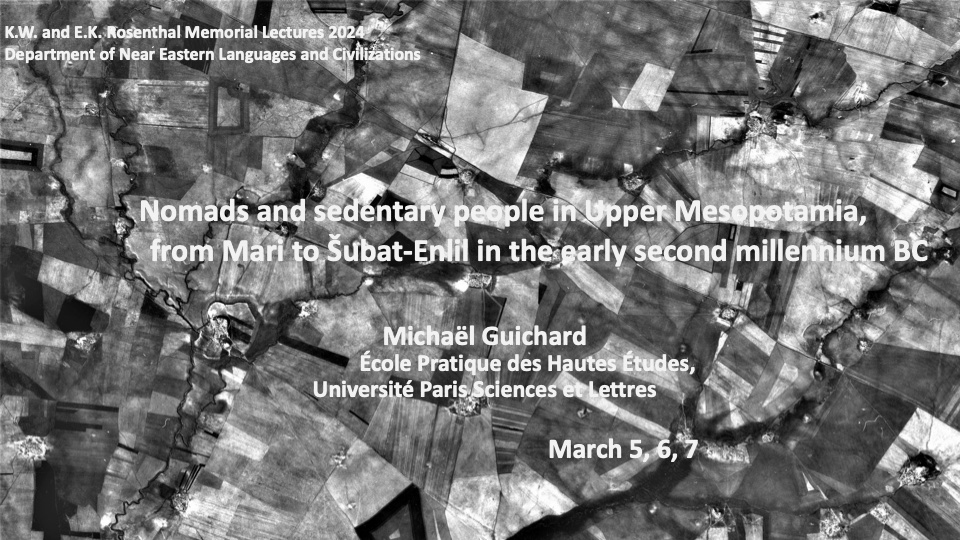K.W. & E.K. Rosenthal Lecture Series
Nomads and sedentary people in Upper Mesopotamia, from Mari to Šubat-Enlil in the early second millennium B.C.
Lectures by Michaël Guichard, École Pratique des Hautes Études & Université Paris Sciences et Lettres
Thursday March 7 at 4 pm
“The Turbulent Life of the Small States of the Upper Jezirah, their Kings, Assemblies and Uprooted People”
Location: HQ 132
In this last lecture, the focus will be on the sedentary states of the Upper Khabur basin, with which the Hana Simalites maintained close relations. This region was fragmented into micro-states. To defend themselves from external pressures, these formed leagues of sorts, the most important being that of the Ida-Maraṣ country. The latter did not occupy the entire area of the Upper Khabur Basin; the countries of Yapṭur to the west, or Apum and Yussan at the eastern end, remained autonomous entities. Local vicissitudes are recounted in great detail in the Mari archives, as Mari naturally tried to impose its authority over the region, while facing other competitors such as Ešnunna or Eluhhut in the Upper Tigris. Since then, in addition to the numerous expeditions of the kings of Mari (the last one being Zimrilim) or their lieutenants to the Upper Khabur, an impressive amount of information has been collected in the great palace of Mari. The documentation uncovered by international excavations in several cities in the region, starting with Šubat-Enlil, is of course another fundamental source. It is thus possible to learn about the characteristics of the local cities, their economy as well as the urban and interurban institutions, in particular political assemblies. A phenomenon specific to this area is the existence of hapirum, witnesses to the crises that shook these cities. They are representative of “political exil” alongside other forms of displacement and migration. While the hapirum people of Upper Khabur have long attracted the attention of researchers, new data have given us a much clearer picture of their history. By studying the careers of several local chiefs, from the palatial aristocracy or from the common people, as well as the peasants, we can gain an unprecedented insight into a society subject to the capricious whims of nature and deeply divided.
Sponsored by the K.W. & E.K. Rosenthal Memorial Lectures in Ancient and Near Eastern Civilizations
